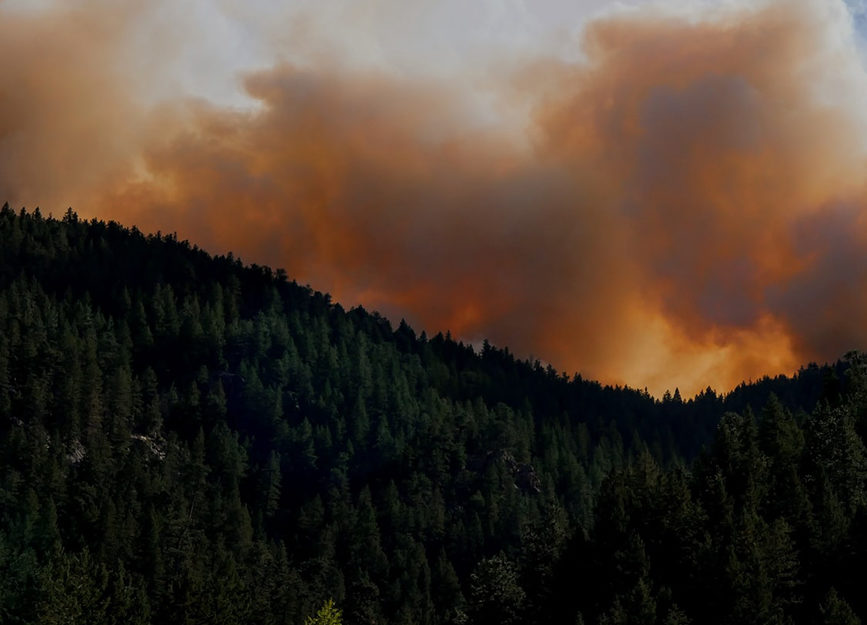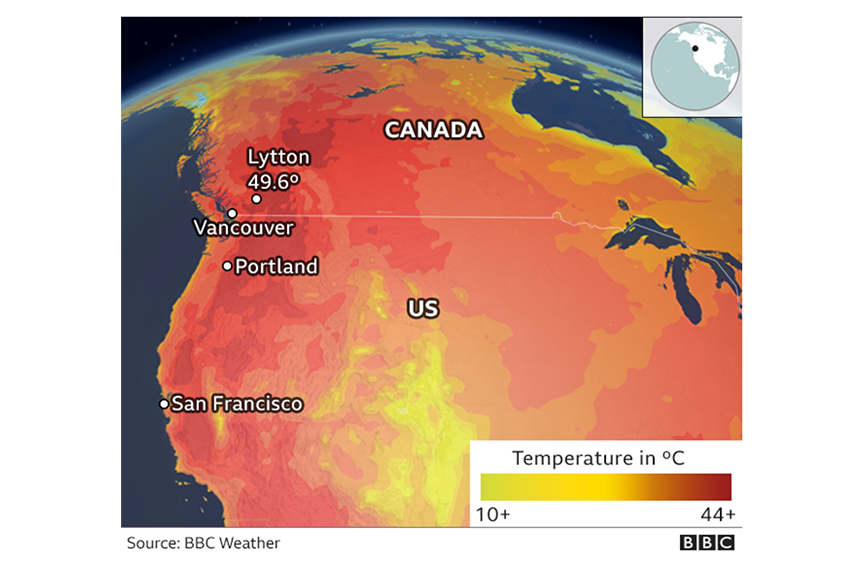





Environment
Wildfires: How Do They Start & How Can They Be Prevented?
Every year it feels like our planet is plagued with more and more fires, with each fire season getting more severe. With record breaking temperatures across North America and Canada, it is no wonder that fire season is starting earlier and already causing immense devastation. Wildfires do not start off as a wild creation, as 90% of fires are started by humans [source: Do Something]. Due to the increase in unbearably hot and dry climates, the fires are continuing to become unmanageable, very quickly.
With record breaking temperatures across North America and Canada, it is no wonder that fire season is starting earlier and causing immense devastation.
Every year it feels like our planet is plagued with more and more fires, with each fire season getting more severe. With record breaking temperatures across North America and Canada, it is no wonder that fire season is starting earlier and already causing immense devastation. Wildfires do not start off as a wild creation, as 90% of fires are started by humans [source: Do Something]. Due to the increase in unbearably hot and dry climates, the fires are continuing to become unmanageable, very quickly.
How do wildfires start?
Historically, the Earth has always burned, and fire has often served as a regenerative process but year by year, these fires are not natural. In 2020, a coloured smoke bomb from a gender reveal party sparked a devastating weeklong blaze near Los Angeles that burned more than 20,000 acres with fatalities [source: New York Times].
Fires sparked by humans “typically spread about 1.83 kilometers per day, more than twice as fast as the 0.83 kilometers per day for lightning-induced burns. The faster spreading fires also burned more intensely and killed double or triple the trees as slower, lighting caused ones.” [source: Science Mag].
From electrical towers and wires to arson to campfires to cigarettes, our carelessness mixed with extreme dry and hot climates are the biggest causes of wildfires. “For example, in 2018 sparks flying from hammering a concrete stake into the ground in 100-degree Fahrenheit heat and sparks from a car’s tire rim scraping against the asphalt after a flat tire were the causes of California’s devastatingly destructive Ranch and Carr Fires, respectively.” [source: NASA].
Droughts create an ideal environment for wildfires to flourish, which is why California is home to so many fires every single year. Forests and rangelands cover over 80% the state’s 100 million acres. “The number of dry, warm, and windy autumn days – perfect wildfire weather – in California has more than doubled since the 1980s [source: Scientific American].
We also cannot ignore the failure of the US government. “One hundred years of misguided forest management aimed at total fire suppression has eliminated the role of natural fire on the landscape, allowing two to four times the normal amount of woody fuel to accumulate even as the biggest, healthiest, most fire-resistant trees were being logged out.” [source: National Geographic].
Fire actually increases soil fertility, which is why farmers have been burning their land for centuries. Controlled burns are one of the best ways to prevent large and devastating wildfires.
How can wildfires be prevented? Traditional Native-American controlled burning.
Before it was banned in 1850 by the Euro-Americans, Native American tribes strategically used fire for controlled burns. These were not out of control fires that raged and destroyed like California’s fires do today. The trick is to do these burns out of the fire season in cooler temperatures, so that the fire can really be controlled.
As fire plays a crucial role in ecosystems all over the world, we cannot cut fire out completely. “It might seem counterintuitive that a fire, which burns plant life and endangered animals within an ecosystem, could promote ecological health. But fire is a natural phenomenon, and nature has evolved with its presence. Many ecosystems benefit from periodic fires, because they clear out dead organic material—and some plant and animal populations require the benefits fire brings to survive and reproduce.” Fire actually increases soil fertility, which is why farmers have been burning their land for centuries [source: National Geographic].
Controlled burns are one of the best ways to prevent large and devastating wildfires, because when fire season hits, there isn’t as much for fires to burn. Prescribed burns, when done in the correct and traditional manner, don’t destroy all living life on the forest floor – The fire mostly takes the old and the dead debris, which would be fuel for wildfires. This method may be one of the best ways to prevent out of control fires that have deadly effects on nature, homes, and our health.
Personal steps to take to prevent forest fires.
The American Red Cross shares some great tips for preventing forest fires whilst enjoying the outdoors, so do see below some of their suggestions. Also please remember that curbing carbon emissions and combatting climate change is our greatest power here, so always think of your individual carbon footprint when thinking about how we help the wider world!
Don’t allow gasoline or motor oil to spill on grass or other vegetation.
Only start a campfire or bonfire in an appropriate fire pit, cleared of all vegetation and ringed by stones.
Avoid setting off fireworks, and do not smoke or put out cigarettes outside.
Always make sure your fire is completely doused with water and smothered with dirt before leaving.
Don’t start a fire on a windy day. Save it for another time. Never leave a fire unattended, such as overnight.
Follow state laws and city ordinances regarding backyard burn disposal. Remove any potentially hazardous material from the surrounding area of your burn before you get started and set up a non-flammable parameter the same way you would with a campfire.
Flammable trees and shrubs near your home should have at least 10’ between foliage. Trim dead limbs at least 12 feet from ground level.
























